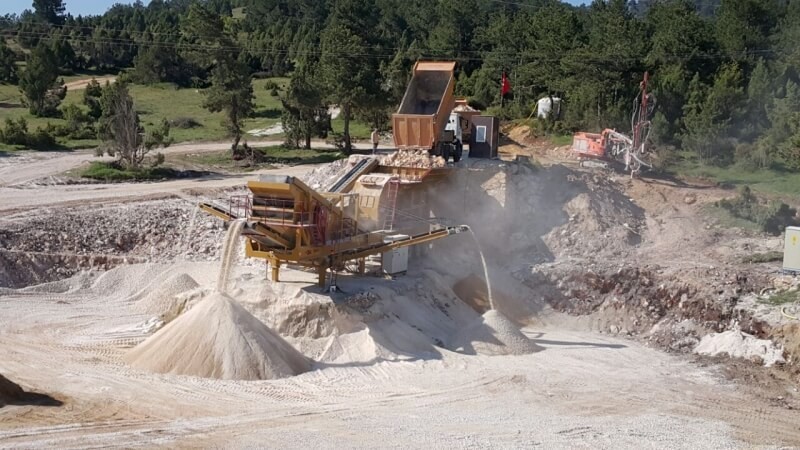Crushing and Screening Plant for Iron Ore
A crushing and screening plant for iron ore is a facility designed to process raw iron ore extracted from mines into smaller, more manageable sizes. This process is essential for preparing the ore for further beneficiation or direct use in various industrial applications. The plant typically consists of several stages, including primary crushing, secondary crushing, screening, and sometimes tertiary crushing.
Primary Crushing: The first stage involves reducing the size of the extracted ore from large chunks to smaller pieces. This is usually done using a jaw crusher or gyratory crusher, which can handle large volumes of material.
Secondary Crushing: After primary crushing, the ore is further reduced in size using cone crushers or impact crushers. This stage ensures that the ore is broken down to a size suitable for screening.
Screening: The crushed ore is then passed through screens to separate it into different size fractions. This step is crucial for ensuring that the ore meets the specific size requirements for subsequent processing or direct use.
Tertiary Crushing: In some cases, a third stage of crushing may be required to achieve the desired particle size. This is typically done using fine crushers or grinding mills.
Additional Processes: Depending on the specific requirements, the plant may also include processes such as washing, magnetic separation, or flotation to further refine the ore.
Automation and Control: Modern crushing and screening plants are often equipped with advanced automation and control systems to optimize the process, reduce downtime, and improve overall efficiency.
Environmental Considerations: Dust suppression systems, noise control measures, and water recycling systems are commonly integrated into the plant to minimize environmental impact.
 English
English
 Le français
Le français
 Türkçe
Türkçe

